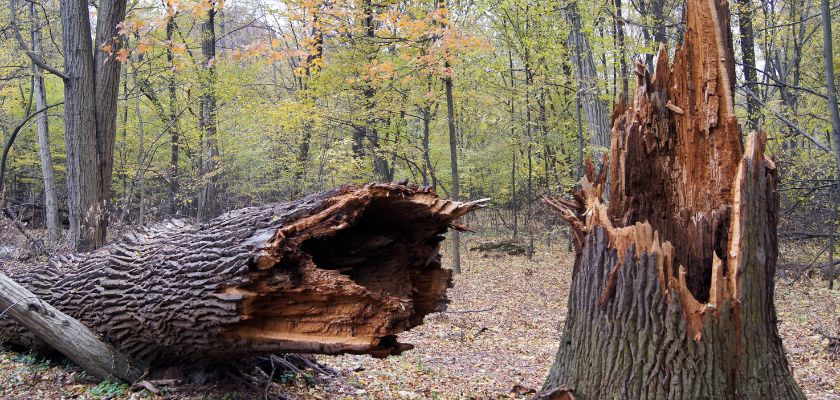For many homeowners, figuring out if a tree is dormant or dead can be a difficult chore. At TTTDallasTX, we recognize how critical it is to precisely evaluate the condition of your trees in order to provide the right upkeep and care. We’ll go over the essential markers that set a dead tree apart from one that is just dormant in this in-depth tutorial, giving you the ability to make wise choices regarding the condition of your environment.
Table Of Content
Understanding the Differences Between Dead and Dormant Trees
Defining Dormancy in Trees
Dormancy is a natural survival mechanism that trees enter into during the winter months or periods of environmental stress. During dormancy, trees conserve energy by slowing down growth and metabolic processes. Leaves may fall, and branches may appear bare, but the tree is still alive and capable of regenerating once conditions improve.
Recognizing Signs of Tree Death
Tree death, on the other hand, occurs when a tree’s vital functions cease due to disease, pest infestation, or environmental factors. Signs of a dead tree include brittle, dry branches, lack of leaf growth, and bark that easily peels away. Understanding these indicators is crucial for promptly addressing tree health issues and preventing further damage to your landscape.
Assessing Overall Tree Health
In addition to distinguishing between dead and dormant trees, it’s essential to assess the overall health of your trees regularly. Look for signs of stress or decline, such as yellowing leaves, wilting foliage, and stunted growth. By monitoring the health of your trees year-round, you can identify potential issues early and take proactive measures to address them.
Conducting a Tree Health Evaluation
Performing Visual Inspections
Visual inspections are an effective way to assess the health of your trees and identify any signs of distress. Look for indications of disease, such as discolored or deformed leaves, fungal growth on branches or trunks, and unusual patterns of dieback. Additionally, check for signs of pest infestation, such as holes in the bark or sawdust-like frass near the base of the tree.
Testing Branch Flexibility
Another method for evaluating tree health is to test the flexibility of branches. Live branches will bend and flex when gently bent, whereas dead branches will snap or break easily. Testing branch flexibility can help you determine the extent of damage and whether pruning or removal is necessary to preserve the tree’s overall health.
Checking for Healthy Growth
Healthy growth is a positive indicator of tree vitality. Look for new leaf buds, shoots, or flowers emerging from the branches, as well as healthy root development in the soil. These signs of growth indicate that the tree is actively metabolizing and responding to environmental stimuli, a clear indication of life.
Implementing Tree Care Practices
Providing Adequate Watering
Proper watering is essential for maintaining tree health, especially during periods of drought or hot weather. Ensure that your trees receive an adequate amount of water, paying attention to soil moisture levels and adjusting irrigation accordingly. Deep watering encourages strong root growth and helps trees withstand environmental stressors.
Pruning and Trimming
Regular pruning and trimming are essential for promoting tree health and structural integrity. Remove dead, diseased, or damaged branches to prevent the spread of disease and improve air circulation within the canopy. TTTDallasTX offers professional tree pruning services to keep your trees in optimal condition year-round.
Implementing Tree Wood Borer Treatment
Tree wood borers can wreak havoc on tree health, causing extensive damage to the inner wood tissues. Early detection and treatment are crucial for preventing infestations from spreading and causing irreversible harm. TTTDallasTX offers effective tree wood borer treatment options to protect your trees and preserve their beauty and vitality.
Final Wording
Distinguishing between dead and dormant trees requires careful observation and knowledge of key indicators. By understanding the differences between the two and implementing proactive tree care practices, you can ensure the health and longevity of your landscape. TTTDallasTX is committed to providing expert tree care services and treatments to keep your trees thriving year-round. Contact us today for all your tree care needs and let us help you maintain a vibrant and beautiful landscape for years to come.
FAQ’s
Yes, it’s possible for a tree to appear dead during dormancy, especially in winter when leaves have fallen and branches appear bare. However, if the tree exhibits signs of life such as pliable branches and healthy buds, it is likely dormant rather than dead.
The duration of dormancy varies depending on factors such as species, climate, and environmental conditions. In temperate regions, trees typically enter dormancy during the winter months and emerge in spring when temperatures rise and daylight increases.
Yes, trees can recover from dormancy and resume active growth once conditions become favorable. Adequate sunlight, moisture, and warmth stimulate the tree to exit dormancy and begin producing new leaves and growth.
If you suspect your tree is dead, it’s essential to conduct a thorough assessment to confirm its condition. Consult a professional arborist who can provide expert advice and assistance in determining the tree’s health and recommending appropriate actions.
Yes, severe drought stress can cause a tree to enter a state of dormancy prematurely, leading to leaf drop and bare branches that mimic the appearance of a dead tree. However, with proper irrigation and care, the tree may recover once conditions improve.

